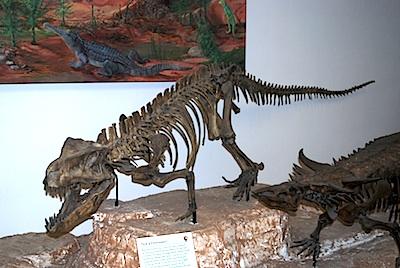Earlier this month you no doubt heard that America's 15-year-olds' science scores, when compared to those of their peers in other countries, were just average. How might they be improved?
Well, if your children enjoy visiting national parks, nudge them in the direction of a career as a scientist working in the parks. The enticement of working in a gorgeous setting just might get them to work a little harder on their classes.
There are many, many different fields to choose from when you starting thinking about science and the parks. There are the obvious ones -- wildlife biologist, hydrologist, and botanist.
And then there are some not-so-obvious ones:
* Physicist...working in the Air Resources Division of a park.
* Petroleum geologist...a somewhat rare position that works on projects in units of the National Park System that have oil and gas production, such as Big South Fork National River and Recreation Area or Big Thicket National Preserve, just to name two.
* Soil scientist...a valuable position in a park such as Theodore Roosevelt National Park, where the type of soils there leads to road slips and other ground movements.
* Hydrologist
* Glaciologist...parks with glaciers range from Kenai Fjords National Park, Glacier National Park and Glacier Bay National Park to Mount Rainier National Park, North Cascades National Park and even Grand Teton National Park.
* Ornithologist..birding in the parks? What's not to like?
* Herptologists..I'm not sure Everglades National Park has one on staff, but they definitely have more than a few snake issues.
* Fire ecologist..with climate change leading to more, and bigger, forest fires, there's a vital role to fill here.
* Veterinarian...someone needs to look after the stock in parks with horse patrols, such as Yosemite National Park, or the cattle at Grant-Kohrs Ranch National Historic Site.
* Fisheries biologist...Yellowstone National Park's troubles with lake trout in Yellowstone Lake have required their expertise, as have Olympic National Park's work to restore the Elwha River drainage.
* Entomologist
* Landscape ecologist
* Range conservationist...Tallgrass Prairie National Preserve, anyone?
* Forester...with the spread of non-native insects in parks such as Rocky Mountain and Great Smoky, there is more than a little work to do in this field.
* Geographer, or cartographer (often, but not always, Geographic Information Systems specialists)
Buck Island Reef National Monument* Oceanographer... wouldn't be too bad of an office, would it?
* Anthropologist...Mesa Verde National Park would be a great place to study ancient cultures.
One "ologist" job that might be difficult to land in the National Park Service, though, would be paleontologist. After visiting Petrified Forest National Park in spring 2012 and spending half a day with the park's paleontologist, I looked into how many such jobs existed in the park system. The answer I tracked down was fewer than a dozen! That despite such fossil-bearing parks as Fossil Butte National Monument, Petrified Forest National Park, Arches National Park, Dinosaur National Monument, Badlands National Park, Florissant Fossil Beds National Monument, Agate Fossil Beds National Monument, John Day Fossil Beds National Monument, Hagerman Fossil Beds National Monument, Big Bend National Park, Canyonlands National Park, Zion National Park, and Grand Canyon National Park.
How can you get your kids moving in this direction? Nudge them towards a science-related internship with their favorite park. According to the National Park Service, "(T)here are thousands of opportunities for high school, college, and graduate school students to work with the National Park Service."
To learn about these possibilities, contact the park of your choice. Or, check into the Student Conservation Association, which places nearly 3,000 students a year in parks to be involved with field projects of some sort. You can learn about other avenues at this website.




Add comment